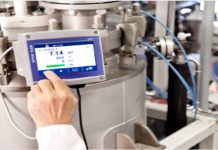India’s greenhouse gas (GHG) emissions have shown a consistent upward trend over the years, as measured in megatons of CO2 equivalent per year (Mt CO2eq/yr). The latest report from the European Commission’s Joint Research Centre (JRC) for 2024 reveals that emissions increased from 3,270.4 Mt CO2eq/yr in 2014 to 4,133.6 Mt CO2eq/yr by 2023.
Notably, 2023 saw a sharp rise of 6%, following increases of 5.9% in 2022 and 7.2% in 2021. According to the report, India contributed 7.8% of global GHG emissions in 2023, placing it third behind China, which accounted for 30.1%, and the US at 11.3%.
The primary drivers of India’s rising GHG emissions in 2023 were the power sector (46.6%), industrial combustion (20.9%), and transportation (11.5%). The JRC report highlights that since 1990, India’s CO2 emissions from the power industry, industrial processes, and transportation have increased significantly – by sixfold and fivefold respectively by 2023.
Despite the growth, India’s cumulative contribution to global GHG emissions from 1850 to 2019 remains just 4%, despite representing approximately 17% of the world’s population during that time. Per capita emissions reached 2.9 CO2eq in 2023, up from 2.5 CO2eq in previous years.
Ulka Kelkar, Executive Director of Climate at WRI India mentioned, “Major industries and transportation rely on coal, gas, petrol, and diesel. Therefore, much of our energy production and consumption is fossil-fuel-based, though renewable energy sources like solar and wind are also being used”.
In 2022, fossil fuels made up 88% of India’s primary energy consumption and 77% of electricity generation. As reported by thehindubusinessline.com, the International Energy Agency (IEA) noted in its ‘CO2 Emissions in 2023’ report that India’s carbon emissions saw a significant increase over the decade, growing from two Gigatons (Gt) in 2013 to 2.8 Gt in 2023 – a 40% rise.































